This is an easy and delicious restaurant style curry sauce!
Almost every British Indian curry house has it’s own curry sauce recipe.
These curry sauces are made in large batches and used as a base ingredient for many different curries.
The base sauce was developed over the years to make cooking curries faster and more economical. This secret sauce is also what gives curry house style curries their unique texture and flavour.
Making the base sauce
For best results at home, you will want to make a large batch of the sauce just as they do in curry houses.
There is simply no substitute for the large batch that has been slowly cooked to perfection.
So I highly recommend taking a peak at my authentic large scale curry house sauce. It freezes well too so you can make an amazing BIR (British Indian Restaurant) style curry in minutes whenever you want one.
This is a scaled down version which will work perfectly well for those of you who want to make an Indian takeaway style curry for four people.
The concept behind the secret base sauce
Think of the curry sauce as you would a vegetable stock. It is quite bland but when you add different spices to it you can make your favourite curries very fast.
Over the years I have tried many different recipes for curry sauce and most of them are quite similar. On my home page, you will find all the Indian restaurant classics that you can make with this simple sauce.
Although you do need to take an hour or so to make it, this base sauce recipe will save you hours in cooking time if you like your curry.
Rather than cooking a curry the more traditional and authentic way, frying onions, garlic, tomatoes etc. to make a base masala, the work it all done for you with this sauce.
Do I have to make a base sauce to get curry house quality curries?
Yes! This base sauce is one of the most important ingredients in curry house style curries.
That said, you could still make them using more traditional methods. They just won’t be the smooth curries you might be used to.
In this recipe for chicken Balti, I didn’t use a base sauce. In this recipe for chicken balti I did use a base sauce.
Both curry recipes are the same except one uses more authentic methods and one uses a base sauce.
Check out the difference in the finished curries below…
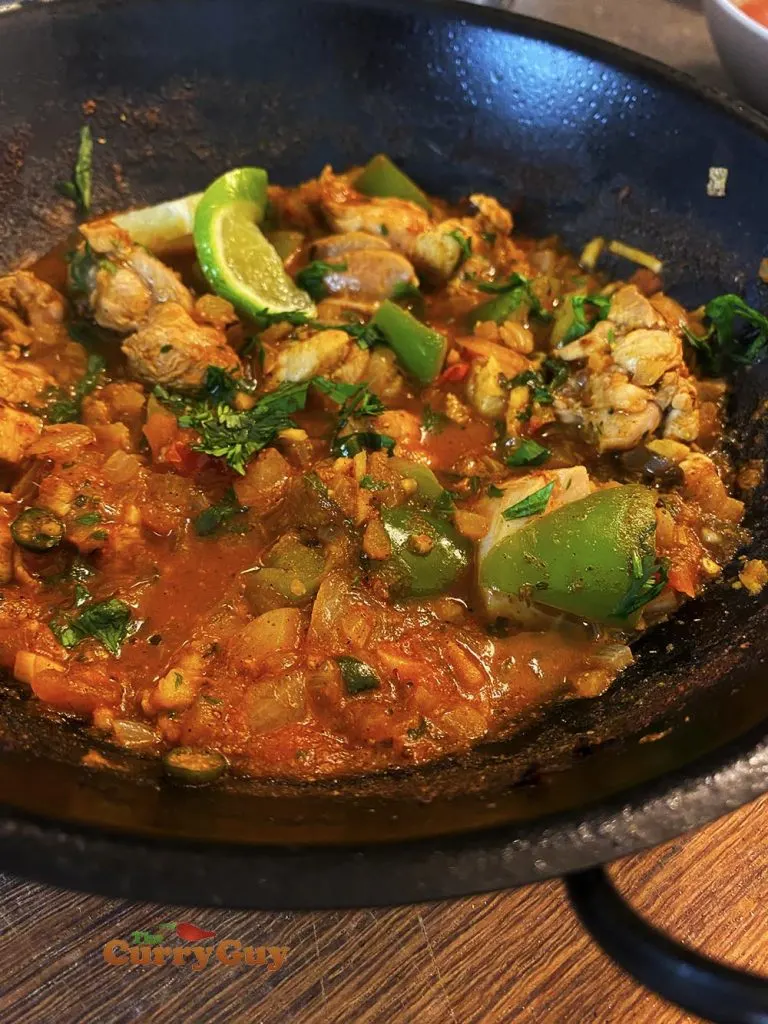
Chicken balti made without base sauce.
The chicken balti without base sauce above was still delicious. It was just different to what you would get at a Balti house restaurant.
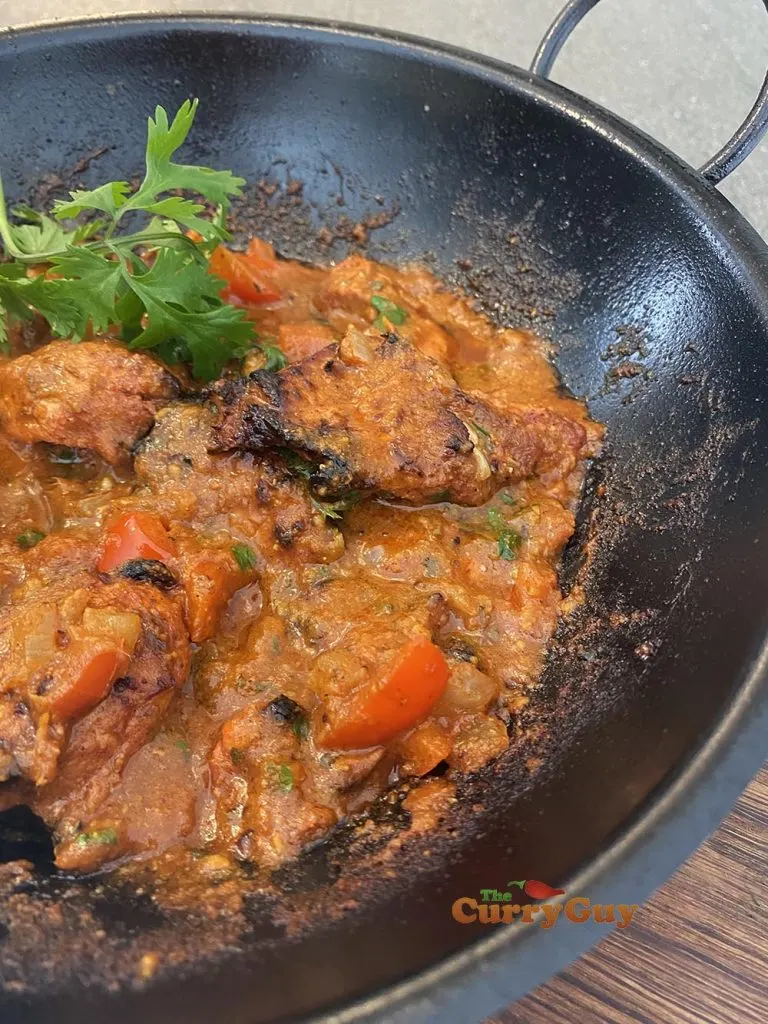
Chicken Balti cooked with base sauce. This is by far my favourite version.
As you can see above, the Balti using a base sauce is thicker and god was it good. This thick balti is perfect for scooping up with naans.
Base sauce curries aren’t always thick though. Try some of my other curry house style recipes with base sauce below.
International & UK Orders
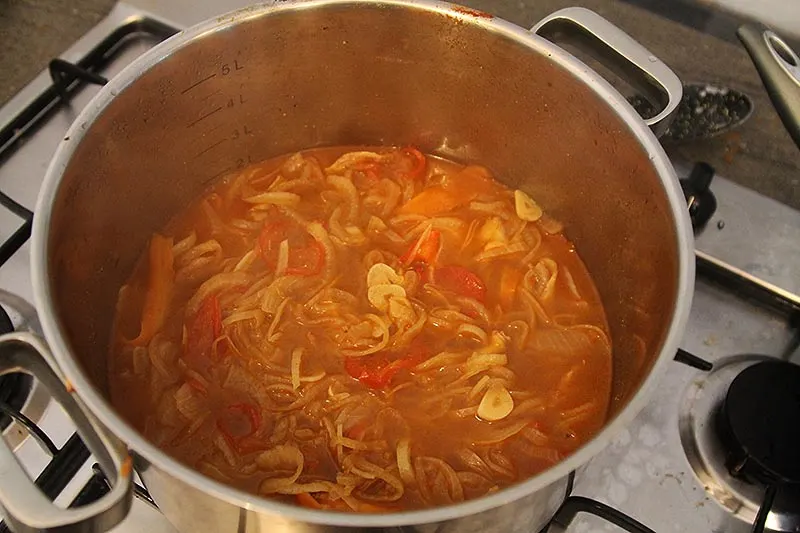
As the veggies simmer, they soften making it easy for your to blend. This sauce is a must for curry house style curries.
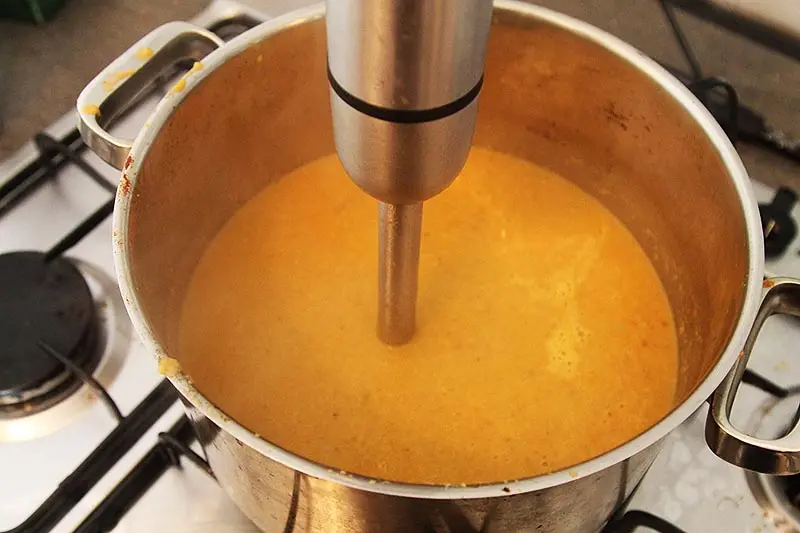
Once the veggies have softened, blend well until very smooth. I like to use a hand held blender for this.
Can the base sauce be frozen?
Yes. It freezes really well.
When you first blend the sauce it will be quite thick. This is the perfect time to portion it out and freeze it.
To use in your curries, however, the base sauce needs to be diluted with water or stock until it is about the same consistency as full fat milk or single cream.
So get some of this secret base sauce in the freezer. You will be able to whip up a delicious curry house style curry whenever you want it.
Here are a few curry house style recipes you can use this base curry sauce in now!
Chicken Tikka Masala
Chicken Korma
Chicken Madras
Chicken Dhansak
Lamb Rogan Josh
Lamb Vindaloo
Chicken Chilli Garlic
Chicken Patia
Lamb Bhuna
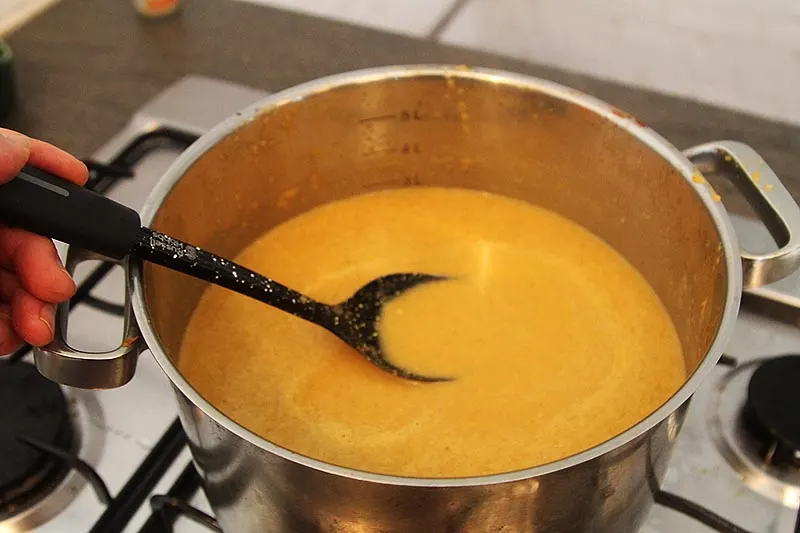
Once blended, you’ve got yourself a sauce that can be used in every curry, from the mildest korma to much spicier curries.
How to Make Restaurant Style Curry Sauce For Use in Many Different Curry Recipes
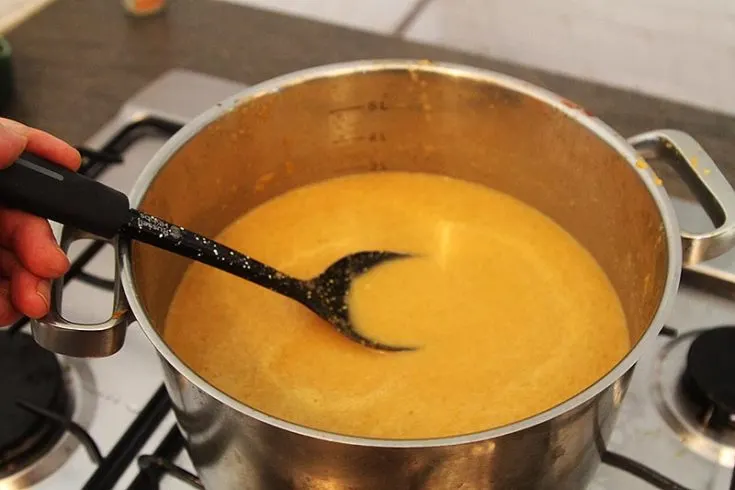
This simple curry sauce is a must when making curry house style curries.
Ingredients
- 3 tennis ball sized cooking onions – finely sliced
- 50ml vegetable oil or ghee
- 3 cloves of garlic – smashed in their skins
- 1 inch piece of ginger – finely sliced
- 1 inch carrot - peeled and chopped
- ¼ cup shredded cabbage (optional)
- ¼ red bell pepper - diced
- water
- 2 tomatoes - finely chopped
- 1 tablespoon ghee
- 1 pinch turmeric
- 1 teaspoon cumin powder
- 1 teaspoon coriander powder
- 1 teaspoon ground fenugreek seeds
- 1 teaspoon smoked paprika
- Salt and pepper to taste ( I usually leave this out and simply add it to the final dish)
Instructions
- Place the ginger and garlic with a drop of the water in a blender and pulverize to a smooth paste. Set aside.
- Now pour the oil/ghee into a large heavy bottomed saucepan and heat until bubbling.
- Throw in the sliced onions, bell pepper, carrot and cabbage and cook slowly over a medium heat in the oil.
- Allow the vegetables to fry - stirring occasionally for about 20 minutes. You want to brown the vegetable lightly but not burn them.
- When the onions are translucent and soft, add the ginger and garlic mixture the rest of the spices except for the turmeric.
- Finally, add the tomatoes and just enough water to cover the vegetables.
- Bring to a boil and then place the lid on the pan and turn the temperature down to low.
- Simmer for about 15 minutes. As you do this, a froth will rise to the top. This is okay. No need to skim.
- After 15 minutes, remove the mixture from the heat and allow to cool slightly.
- For a smoother sauce, popular in many Indian takeaways, simply blend for about two minutes. It is perfectly good unblended though.
- Once your sauce is to your liking, melt the ghee in a frying pan. Add the turmeric powder. It will darken as it cooks. You want to brown it for about a minute.
- Now add the turmeric/ghee mixture to the sauce and bring to a simmer again. Once it is bubbling away, turn down the heat and simmer for a further 15 minutes. Stop simmering if the sauce becomes too thick.
- Use immediately or store in the fridge for up to four days.
Recommended Products
As an Amazon Associate and member of other affiliate programs, I earn from qualifying purchases.
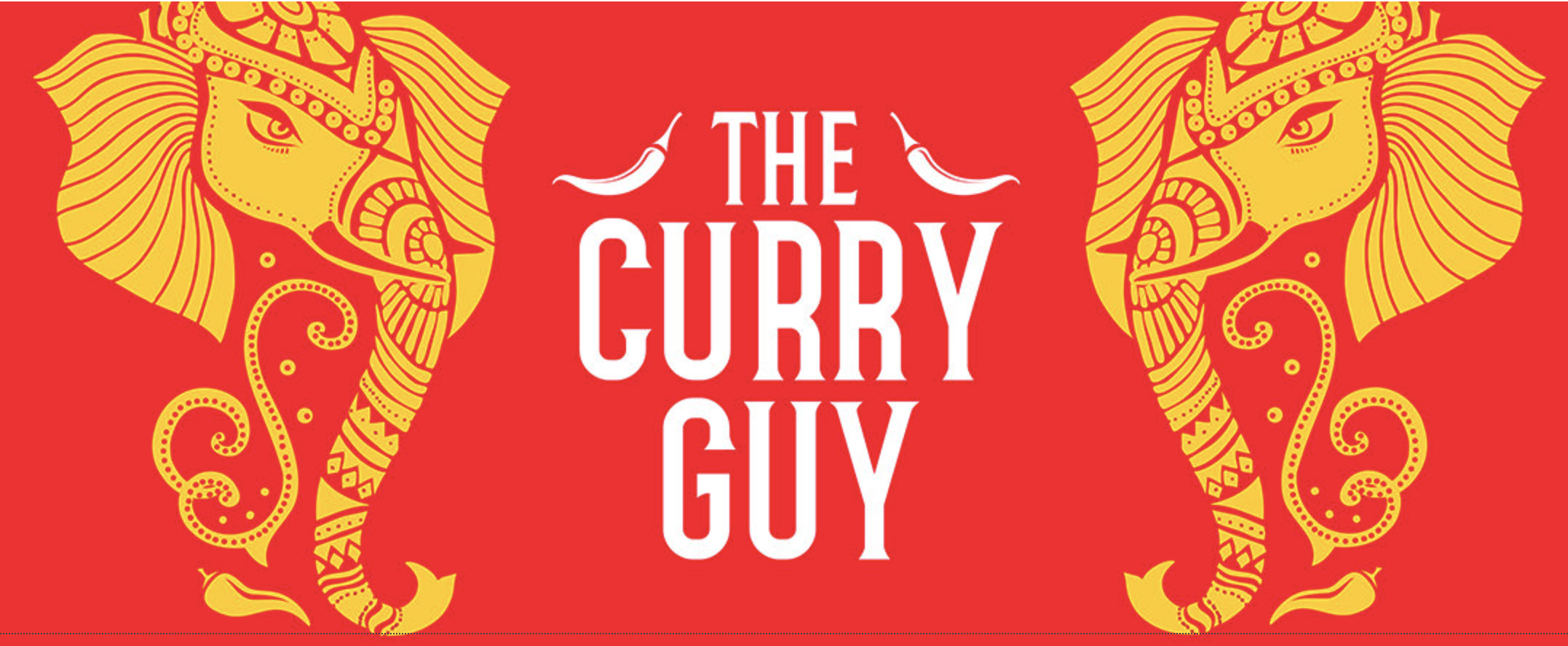


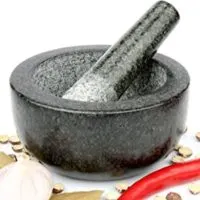
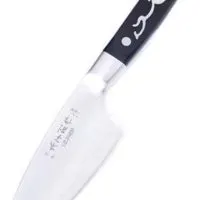
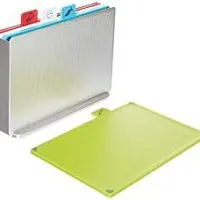
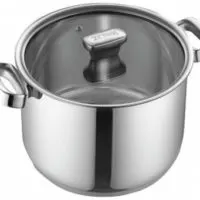
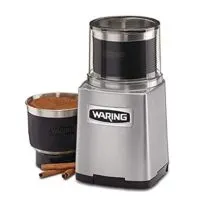
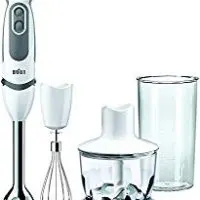
Mig Weston
Friday 29th of March 2024
Thank you for your work. I've got your book and I made a sublime chicken tikka masala with this base sauce. I'd add that if you've got a posh soup maker, this is easily made in one of these.
Dan Toombs
Saturday 30th of March 2024
Great to know, thanks very much. Dan
Ross
Wednesday 3rd of January 2024
Hi Dan, I have a query about the ingredients.
Does ‘1 inch carrot’ refer to a whole carrot with a diameter of approximately one inch, or does it mean a one inch piece cut from a carrot?
Kind regards, Ross.
Dan Toombs
Wednesday 3rd of January 2024
Just about an inch long of an average sized carrot. Don’t worry too much as it doesn’t have to be too exact. Thanks Dan
James West
Saturday 4th of March 2023
Why have you used "cups" as a measure? It's this not an Amrican unit of measure?
Dan Toombs
Tuesday 7th of March 2023
I tend to give the measurements in cups and ml. I do get a lot of Americans reading my my blog so I try to cater to everyone. Thanks Dan
Linda
Sunday 23rd of October 2022
Can you freeze curry base sauce after diluting?
Dan Toombs
Sunday 30th of October 2022
Hi Linda
Yes you can. I just freeze it before diluting to save freezer space.
Thanks, Dan
Bernie
Sunday 16th of January 2022
Just want to make sure I have this right…if I freeze the thick base sauce into 3 cup portions when I defrost to use I add 3 cups of water to have 6 cups of base ie: enough for 2 r person curry recipes? He f a recipe calls for 3 cups of base you mean 3 cups of base plus water?
Dan Toombs
Friday 21st of January 2022
Yes, you have all of that correct. Thanks very much. Dan